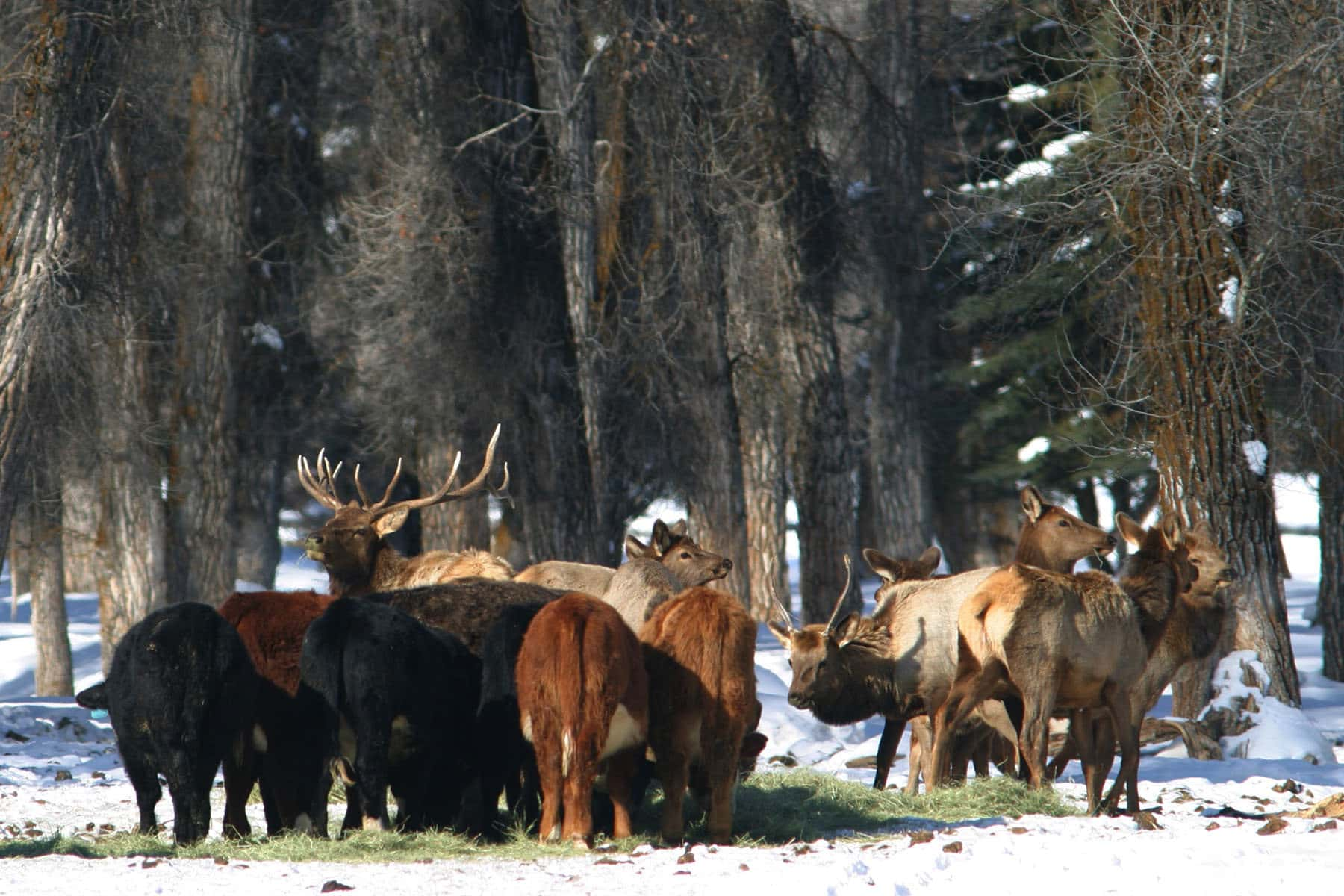The U.S. Department of Agriculture (USDA) and the state of Wyoming are formalizing a partnership to support the voluntary conservation of private working lands and migratory big game populations in Wyoming. As part of the agreement signed today by Agriculture Secretary Tom Vilsack and Governor Mark Gordon, USDA will provide a new package of investments in key conservation programs for fiscal year 2023, which includes funding to support increased staffing capacity and the deployment of streamlined program application processes for agricultural producers and landowners. Producers in the Wyoming pilot area will be able to apply for conservation programs that meet their unique needs starting this fall.
Using lessons learned from this partnership pilot, USDA seeks to scale up this model across the West as part of President Biden’s commitment to support voluntary, locally led, producer-driven conservation efforts.
“Conserving private working lands and tribal lands through voluntary, collaborative incentives not only empowers producers to address a range of natural resource concerns, but also helps them care for our nation’s most important wildlife habitats and corridors,” said Secretary Vilsack. “We’re pleased to announce today’s agreement, which is the product of consultation and partnership with the State of Wyoming and local stakeholders. This agreement will help create new and enhanced opportunities through USDA’s conservation programs to keep working lands working and give farmers, ranchers, and forest landowners new opportunities to conserve wildlife and migration corridors.”
“Wyoming leads the nation in our approaches to conserving wildlife, particularly big game migration. We do that with strong landowner partnerships and recognition that habitat conservation can be done on multi-use lands,” said Governor Gordon. “Private landowners have long provided key habitat for wildlife across Wyoming. Offering voluntary funding opportunities to landowners to maintain this valuable space for wildlife is a recognition of their role in conservation.”
Package of Opportunities for Producers
Based on extensive feedback obtained from listening sessions throughout Wyoming, USDA will be offering producers a package of opportunities they can choose from to meet their operations’ unique needs. Programs include the Environmental Quality Incentives Program (EQIP), Agricultural Conservation Easement Program (ACEP) and Grassland Conservation Reserve Program (Grassland CRP) and will be available across a wide range of lands including grasslands, shrublands, and forested habitats located on tribal and privately owned working lands.
In 2023, USDA’s Natural Resources Conservation Service (NRCS) plans to invest $6 million in additional EQIP assistance and $10 million through ACEP.
EQIP focuses on integrating practices on working lands, such as prescribed grazing systems. ACEP helps producers who want to protect sensitive landscapes and prime farmlands from conversion to non-compatible land uses such as residential subdivision through establishment of long-term conservation easements.
These programs will complement a Habitat Lease offering through the Grassland CRP program, which helps producers and landowners maintain and protect grasslands while still enabling haying and grazing activities to continue.
As part of this pilot, USDA has also developed special guidance that allows compatibility between programs, enabling producers to stack different farm bill program benefits in ways that fit their specific requirements. Producers who sign up through EQIP will also receive additional ranking points on their Grassland CRP applications.
NRCS and USDA’s Farm Service Agency (FSA) will announce details on how to participate soon.
Broader Efforts
This pilot, first announced in May 2022, leverages and compliments other ongoing conservation efforts on working lands such as those conducted under the Working Lands for Wildlife’s (WLFW) Framework for Conservation Action in the Great Plains Grasslands and Sagebrush Biome, unveiled last year by USDA. Both efforts emphasize a commitment to voluntary, incentive-based approaches; identifies and elevates the critical role of private, working lands; and stresses the importance of supporting state, tribal, and landowners to advance their conservation priorities. The pilot also further focuses FSA’s commitment to assisting producers in protecting and maintaining grasslands through grazing and for supporting plant and animal biodiversity within National Priority Zones.
Working Lands for Wildlife is NRCS’ approach that has enabled more than 8,400 producers across the United States to conserve 12 million acres of prime wildlife habitat since 2010. This approach has had ample success in the West, where it has focused on protecting working lands from exurban development, removing invasive weeds and invading conifers, reducing wildfire risk, and protecting wetlands. Resulting conservation actions played a key role in the no-list decisions for the gopher tortoise, greater sage-grouse, Bi-State sage-grouse, and New England cottontail as well as the delisting of the Louisiana black bear.
The Importance of Grasslands to Climate, Biodiversity and Communities
Importantly, these efforts are helping landowners keeping grasslands intact. One out of every three acres in the Continental United States are grasslands, with 90% located in the West. These are places like the Great Plains and the Sagebrush Sea where grazing animals, both domestic and wild, roam through grasses and shrubs. Grasslands are the backbone of the beef industry, and they support rural communities, wildlife habitat, and recreation.
These wide-open grazing lands also hold 12% of all terrestrial carbon on our planet, most of it stored deep beneath the soil. Unfortunately, grassland ecosystems are the most imperiled on Earth. In the United States, a million acres per year are lost to make way for row-crops and subdivisions. Conserving working grasslands and shrublands is critical to USDA’s climate mitigation and adaptation strategies.
More Information
Under the Biden-Harris administration, USDA is engaged in a whole-of-government effort to address climate concerns and conserve and protect our Nation’s lands, biodiversity and natural resources including our soil, air and water. Through voluntary conservation practices and partnerships, USDA aims to enhance economic growth and create new streams of income for farmers, ranchers, producers and private foresters. Successfully meeting these challenges will require USDA and our agencies to pursue a coordinated approach alongside USDA stakeholders, including state, local and Tribal governments.
####
USDA – 2022


